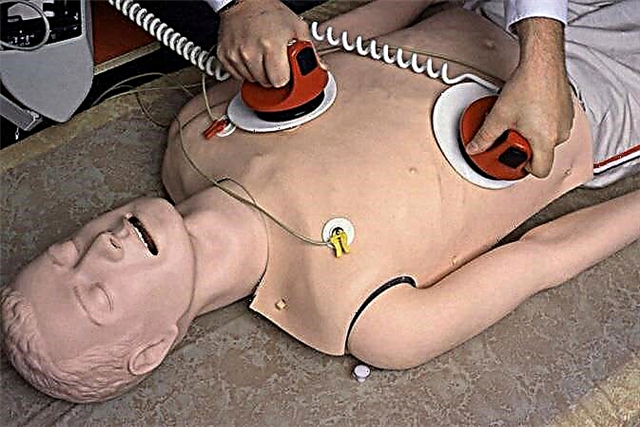Ultrasound examination is a method based on the analysis of differences in the reflection of ultrasound waves from tissues of different density and structure. Ultrasound has become indispensable for early diagnosis of pregnancy and tracking the normal growth and development of the fetus, detecting defects or genetic abnormalities. If necessary, use additional ultrasound modes: dopplerography, echocardiography of the fetal heart.
Ultrasound has a number of advantages, in contrast to other minimally invasive techniques:
- ease of implementation and availability of the method;
- safety for both the woman and the fetus;
- absolutely painless procedure for which no preliminary preparation is needed;
- quick acquisition of objective data on the state of the mother's organs and the development of the fetus.
When a fetal ultrasound is done
Since ultrasound has no contraindications, the number of times it is performed may differ depending on the course of pregnancy and health. On average, a woman makes 3-4 examinations during gestation.
1st trimester
It is recommended to conduct the first study when menstruation is delayed, 5-6 weeks after the last menstruation. Ultrasound at this time will help confirm the presence of an embryo in the uterine cavity and exclude tubal pregnancy, listen to the fetal heartbeat. An ultrasound scan is mandatory at 11-13 weeks. It is during these periods that reliable data can be obtained on the presence of gross deformities of the fetus, anomalies of genetic origin. First of all, this screening should go to women over 35 years old, who had a history of miscarriages, frozen pregnancy, hereditary diseases both in the patient herself and through her husband, the birth of children with developmental pathologies or chromosomal abnormalities.
Pathologies that can be detected on ultrasound screening:
- defect in the development of the neural tube;
- omphalocele (pathology of the anterior abdominal wall);
- triploidy (a triple set of chromosomes with many malformations);
- genetic syndromes of trisomy: Down (21 chromosomes), Edwards (18 chromosomes), Patau (13 chromosomes).
2nd trimester
The second screening should preferably be carried out at the 18-20th week of pregnancy, when the organs and systems of the fetus are already sufficiently formed. During this study, it is determined:
- fruit size and weight;
- the condition of the spine, limbs, skull bones;
- volume and condition of amniotic fluid;
- the correctness of the development of internal organs;
- assessment of the position and degree of maturity of the placenta.
An additional method can be dopplerometry - a method for determining blood flow, its speed, pressure inside arteries and veins. Doppler is used to study the vessels of the umbilical cord of the fetus, helps to assess the effectiveness of its blood supply, to diagnose entanglement or placental insufficiency.
If you suspect the presence of defects of the cardiovascular system, additional studies need to be done. An ultrasound of the fetal heart during pregnancy is prescribed if the mother has a congenital malformation of the cardiovascular system or other serious diseases, infections in the early stages, the presence of fetal heart rhythm disturbances. If necessary, an echocardiogram is used - a more complex method than ultrasound, using a special sensor. As a result, you can get a complete picture of the structure of the heart, blood vessels and blood supply. The data is stored electronically so that it can be revised again.
Ultrasound of the fetal heart during pregnancy is performed at 11 weeks. Since the organ is tiny in the first trimester, only very serious pathologies and rhythm disturbances can be detected. To obtain more objective data, echocardiography is recommended to be performed from the 18th to the 28th week.
3rd trimester
At this time, the task of the study is to assess the size of the fetus, its position in the uterus, the state of internal systems, the presence and degree of possible developmental delay. In the later stages, ultrasound will help to identify organ defects (for example, hydronephrosis, megaureter) in order to eliminate these problems right in the uterine cavity.
These studies help determine the tactics of childbirth: the need for a cesarean section with an incorrect (leg, transverse) position of the fetus, placenta previa.
Technique of execution and interpretation of results
Performing an ultrasound scan is technically very simple, but deciphering and evaluating the results requires experience and skills. For the procedure, various sensors are used that allow examination through the abdominal wall (transabdominal) or inside (transvaginal). For the best passage of ultrasonic beams, a special gel is used.
To obtain reliable ultrasound results, the doctor takes measurements of the fetus and compares the data with the norms for each week. The coccyx-parietal (CTE) and biparietal size (BPD) must be specified. In the first trimester, these values will help you accurately determine the length of your pregnancy. In the following studies, the circumference of the head (OH), abdomen (OB), the length of the limb bones and their correspondence to the weeks of pregnancy are additionally measured.
Measurement of the fetal heart rate is mandatory: in the 1st trimester, the parameter can be 160-190 beats, from the 11th week - 140-160 beats / min. The conclusion should indicate the amount of amniotic fluid, the location of the placenta, the length of the cervix.
Modern diagnostic methods are capable of detecting genetic abnormalities at an early stage. With the help of echocardiography, you can learn about heart defects and quickly operate on a child. Ultrasound will help to accurately determine the gender of the baby, and techniques such as 3D and 4D will even show the facial features of the baby in a photo or video.
Although there are various debates around the safety of the method, the study carries a lot of useful information about the health of the expectant mother and fetus.



